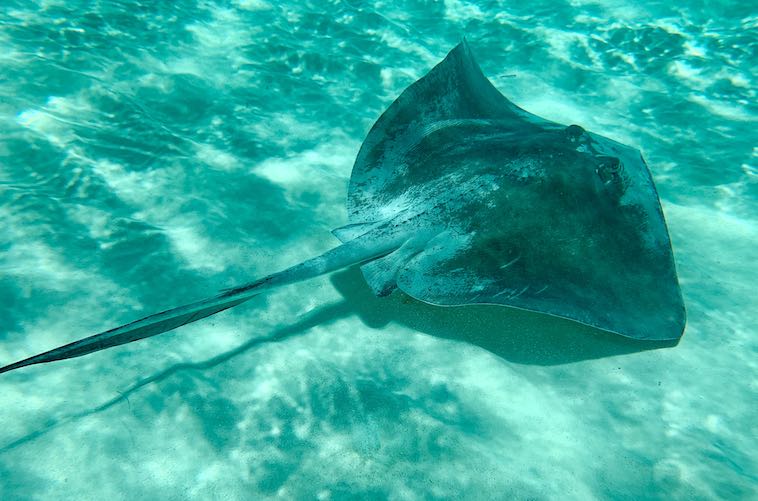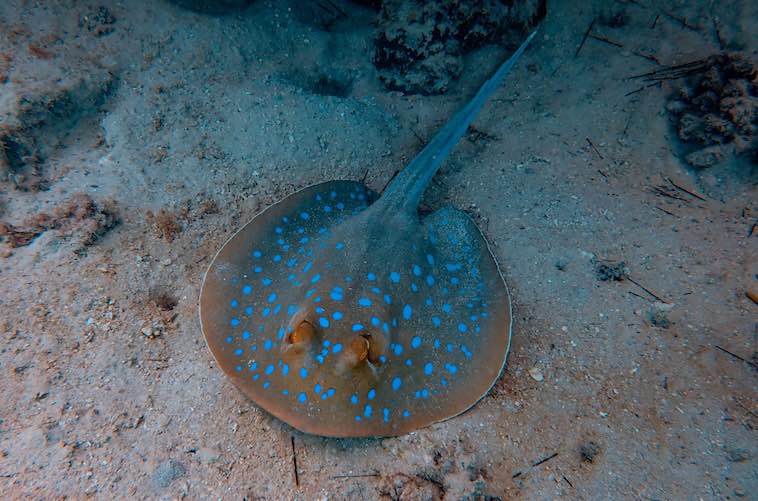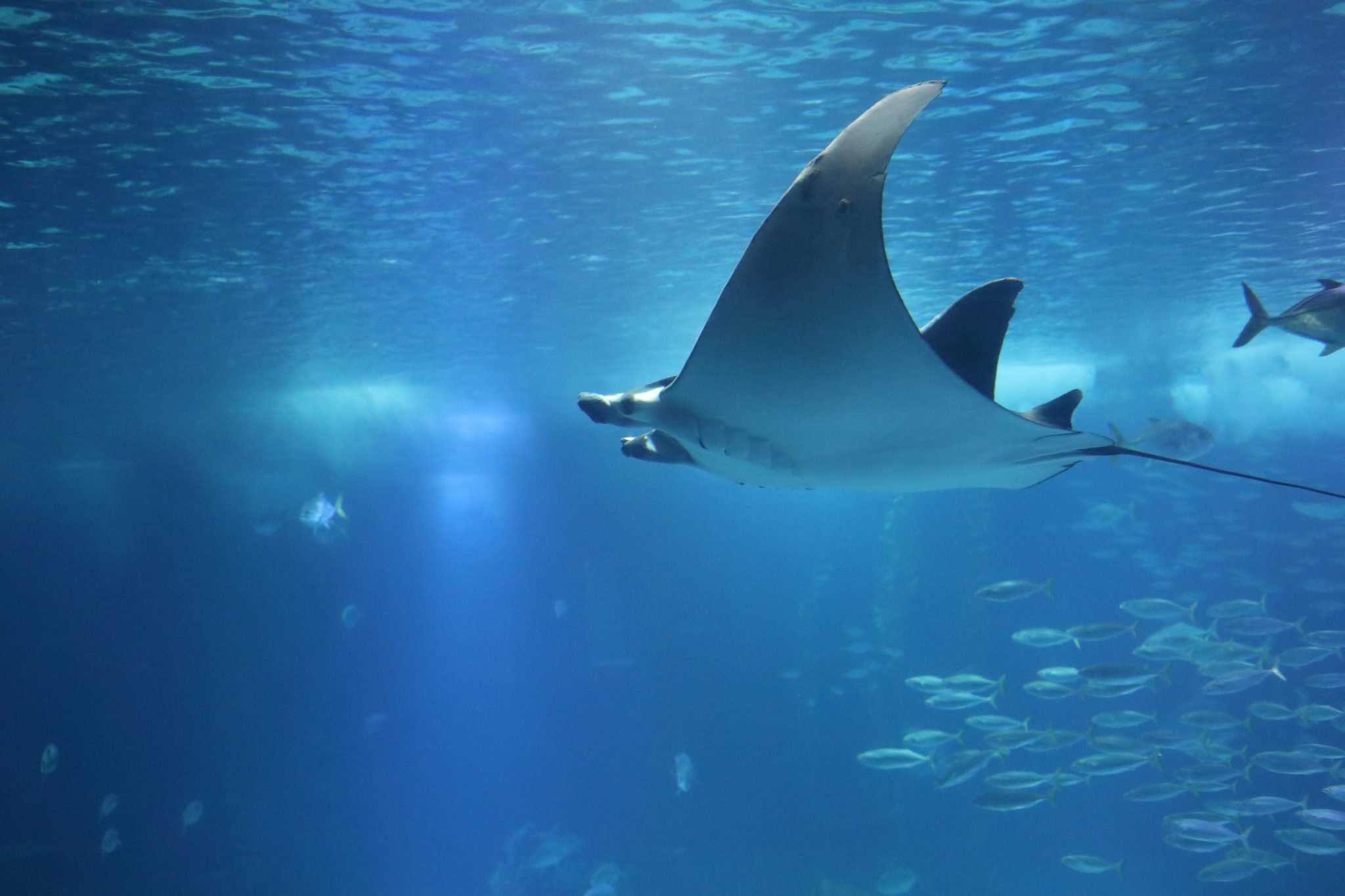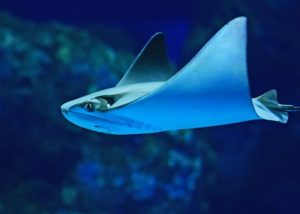

10 Fun Facts About Stingrays
One of the great things about living here on the Gulf of Mexico is the diversity of the wildlife and marine life. No where is this more true than along the sugar white sands of the Gulf of Mexico around Shell Island and Panama City Beach.
Often, clearly visible through the crystal clear waters, a school of rays will be seen 'flying' through the water, riding the waves and making their way along the shoreline out to maybe the first sandbar. They will surf in with the waves then turn and head out again as they cruise down the coast.
Seeming oblivious or unfazed by swimmers or people in the water, they glide around any obstacles and carry on cruising the beach!
Fun Fact 1 - a collection of rays is known as a 'fever'.

So what is a stingray?
A Stingray is is a type of Ray, and a Ray is a fish similar to a shark. They have a flattened shape and large pectoral fins along the length of their body. They swim by flapping these fins like a bird, or moving them in a wave-like motion.
There are more than 200 different species of rays and they are found in all parts of the world in tropical, warm waters.
The stingray is different from other rays in that it has a tail with venomous barbs which they will use to sting when the ray feels threatened.
Fun Fact 2 - The largest species of stingray is the short tail stingray which can measure up to six foot 5 in length and weigh up to 690 pounds.
Rays are bottom feeders or filter feeders and live on crustaceans and mollusks from the seabed. Some filter plankton for food.
Female stingrays are larger than males with females getting to 6 feet in diameter while males only reach about 2.5 feet. Their maximum weight gets up to around 210 pounds.
Females reach sexual maturity after about 4 years and give birth to litters of pups ranging from 1 - 6 in number. Courting and mating takes place in April - May and the pups are born between August and September. Other than for courting and mating, males and females do not hang out together.
Fun Fact 3 - A baby ray is called a 'pup'.
Stingrays got a rather tarnished reputation after an Australian Wildlife presenter, Steve Irvine, was killed by one when it stung him in the chest. Despite this, stingrays are docile creatures and only sting in order to protect themselves.
Fun Fact 4- Their venom was once used as a local anesthetic by the Ancient Greeks.
In general they pose a low to moderate risk to humans. Care must be taken when walking out into the water as stingrays like to bury themselves in the sand and if trodden on, may well sting in self-defense. A stingray sting can be extremely painful and may require an emergency room visit.
The best way to avoid being stung is to shuffle your feet when walking through water - the noise of your approach will normally be enough to warn the stingray and allow it to get out of the way.
The stingray stings via its tail which has barbed spines covered by a sheath. The spines contain venom and can pack a very painful sting.
If you are unlucky and get stung and a barb has punctured your neck, chest or abdomen, you should seek immediate medical attention. If on the other hand you step on one and get stung then try to clean the wound while in the water and then afterwards apply antiseptic cream and cover the wound with gauze. Some say that soaking in hot water relieves the pain but there is no medical evidence for this.
It is possible to have an allergic reaction to the venom and this may require medical attention.
Do remember, a stingray can still be dangerous even when dead. Barbs on a dead ray will still be as effective and painful as when the ray was alive.
Fun Fact 5- Despite their name, stingrays are very docile and will not attack humans.
Stingrays have really bad eye-sight and rely on electro-sensors to seek out their prey! These electric sensors surround their mouth which is located underneath their bodies closest to the sand.
Their gills are on the underside which presents a problem breathing when they are lying in or on the sand bottom. To get around this rays have developed spiracles behind their eyes which act as a secondary opening for their respiratory system.
Fun Fact 6- They have two separate breathing mechanisms.
Other Rays in the Gulf of Mexico


Manta Ray
There are two types of manta ray in these waters, the devil ray and the giant manta ray.
The devil ray is similar in body shape but much smaller in size. The devil ray has a wing span of about 4 feet and can swim at high speed allowing it to breach (jump out of the water). The devil ray feeds on crustaceans and may eat small schooling fish. They usually only have one pup per litter.
Devil rays are a protected species in Florida state waters and are of little threat to humans.
Fun Fact 7 - Manta rays have the largest brain of all fish.
Giant manta rays are so called because..well, they're big! The giant manta ray is the world's largest ray with a wingspan of up to 29 feet! These enormous rays may weigh as much as 4,000 pounds. They are filter feeders and live on plankton.
Fun Fact 8 - Manta rays usually avoid all contact with humans.
Manata ray nurseries have been discovered in the Gulf of Mexico in recent years. Originally a nursery was discovered about 70 miles south of Galveston in 2018 and now another has been found in the saltwater border of Palm Beach County.
These nurseries are a sort of safe underwater playground for these gentle creatures where pups up to adolescents can grow in safely.
Fun Fact 9 - They often visit sites called "cleaning stations" where some fish species are responsible for removing parasites from their skin..
Giant manta rays are a protected species in Florida state waters and are of little threat to humans.
Their biggest threat is from fishing vessels where they are often found in nets as unwanted bycatch.
Fun Fact 10 - Manta rays are often mistaken for sharks as often their fin tips can be seen above the surface, resembling shark fins.
Spotted Eagle Ray
The spotted eagle ray is extremely large like the giant manta ray. It can have a wingspan up to about 29 feet long and 10 feet wide and can grow to weigh in at about 500 pounds.
They have a long whip-like tail with venomous spines.
The spotted eagle ray has many different common names, including white-spotted eagle ray, bonnet skate, bonnet ray, duckbill ray and spotted duck-billed ray.
The female will give birth to a maximum of four pups in a litter.
Fun Fact 11 - Spotted eagle rays prefer to swim in waters of 75 to 81 °F.
Cownose Ray


The cownose ray is an inshore species found in bays and coastal lagoons. The females typically reach about 3 feet in width and males about 2 to 2.5 feet and weigh 50 pounds or more. They are so named because of a dome-like structure on top of their head.
Cownose rays eat clams, oysters, hard clams and other invertebrates. Unfortunately they are know for doing a lot of damage to oyster beds which are already under severe threat from humans.
They have few natural predators but list cobia, bull sharks, hammerhead sharks and sandbar sharks as well as, of course humans.
Once again, their wing tips are often thought to be shark fins as they rise above the water when swimming.
They migrate from the Gulf of Mexico to Brazil, Trinidad or Venezuela in the late spring and late fall. Their migration has been subject of films where thousands of rays are shown covering the surface of the water.
Fun Fact 12 - The largest cownose ray ever recorded was 7 feet wide, wing tip to wing tip.
Come and enjoy a jet ski dolphin tour with Freedom Watersports and explore our local waters, jet ski to Shell Island and swim with dolphins and maybe even rays! We hope you have learned some useful things from our post about rays and have a great jet ski rental tour!
For more information about jet ski rentals please give us a call on:
850-481-0142
or book today online!
If you have concerns about the weather, please check out this link to give you the latest local conditions.

